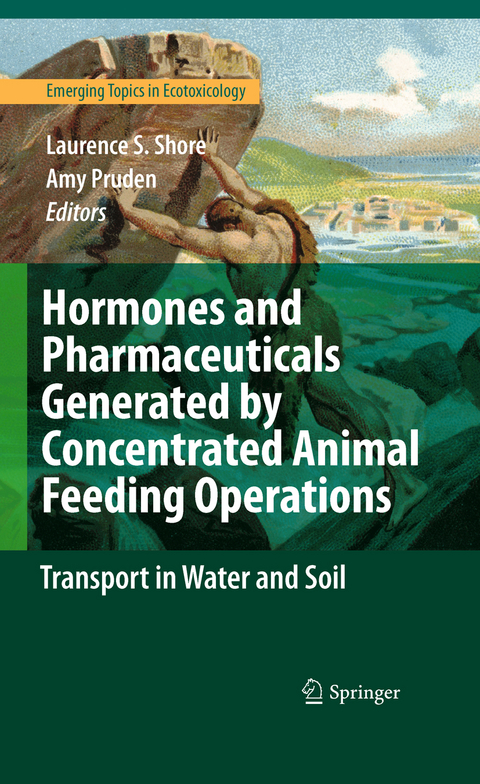Hormones and Pharmaceuticals Generated by Concentrated Animal Feeding Operations
Springer-Verlag New York Inc.
978-0-387-92833-3 (ISBN)
Dr. Laurence S. Shore received his doctorate in physiology from Hahnemann Medical School in Philadelphia in 1972. After working as a cowboy and chicken farmer, he joined the staff at the Kimron Veterinary Institute in Israel in 1979. He has 70 reviewed publications dealing with reproductive endocrinology and toxicology of many phyla including snails, carp, chickens, cows, oryxes and lions. His current research is the transport of hormones and drugs from CAFOs in soil, watersheds and groundwater. This work was done in Israel, Germany and the USA, where he was a Senior Smithsonian Fellow at the Smithsonian Environmental Center in 1993. Dr. Amy Pruden received her Ph.D. in environmental science from the University of Cincinnati in 2002. She was an assistant professor of environmental engineering at Colorado State University specializing in applied environmental microbiology and biological processes, focusing much of her effort on understanding antibiotic resistance genes as environmental pollutants. Dr. Pruden has published more than 25 peer-reviewed articles in the last eight years, one of which focused on antibiotic resistance and received an Editor's Choice Award from the journal Environmental Science and Technology. In 2006, she received an NSF CAREER Award and the Presidential Early Career Award in Science and Engineering (PECASE). Dr. Pruden is currently an associate professor in the Department of Civil and Environmental Engineering at Virginia Polytechnic Institute and State University.
Steroid Hormones and Enzymes.- Steroid Hormones Generated by CAFOs.- Transport of Steroids in Surface Waters.- Physiochemical Characterization of Steroid Hormones in Soil.- Transport of Steroids in Soil Under Field Conditions.- Tracking Sources of CAFO Pollution.- Soil Ecology and Factors Affecting Biomass.- Production and Transport of Antibiotics from CAFOs.- Antibiotic Resistant Genes in Soil Bacteria.- Effects of Steroid Hormones on Aquatic and Soil Organisms.- Organic Compounds used in Aquaculture.- Organic Compounds Used in Animal Husbandry.- Enviromental Impact and Risk of CAFOs.- Management Approaches to Dealing with Pharmaceuticals and Hormones from CAFOs.
| Erscheint lt. Verlag | 15.6.2009 |
|---|---|
| Reihe/Serie | Emerging Topics in Ecotoxilogy: Principles, Approaches and Perspectives ; 1 |
| Zusatzinfo | 23 Illustrations, black and white; X, 138 p. 23 illus. |
| Verlagsort | New York, NY |
| Sprache | englisch |
| Maße | 155 x 235 mm |
| Themenwelt | Naturwissenschaften ► Biologie ► Ökologie / Naturschutz |
| Naturwissenschaften ► Chemie ► Technische Chemie | |
| Technik ► Umwelttechnik / Biotechnologie | |
| ISBN-10 | 0-387-92833-2 / 0387928332 |
| ISBN-13 | 978-0-387-92833-3 / 9780387928333 |
| Zustand | Neuware |
| Haben Sie eine Frage zum Produkt? |
aus dem Bereich




